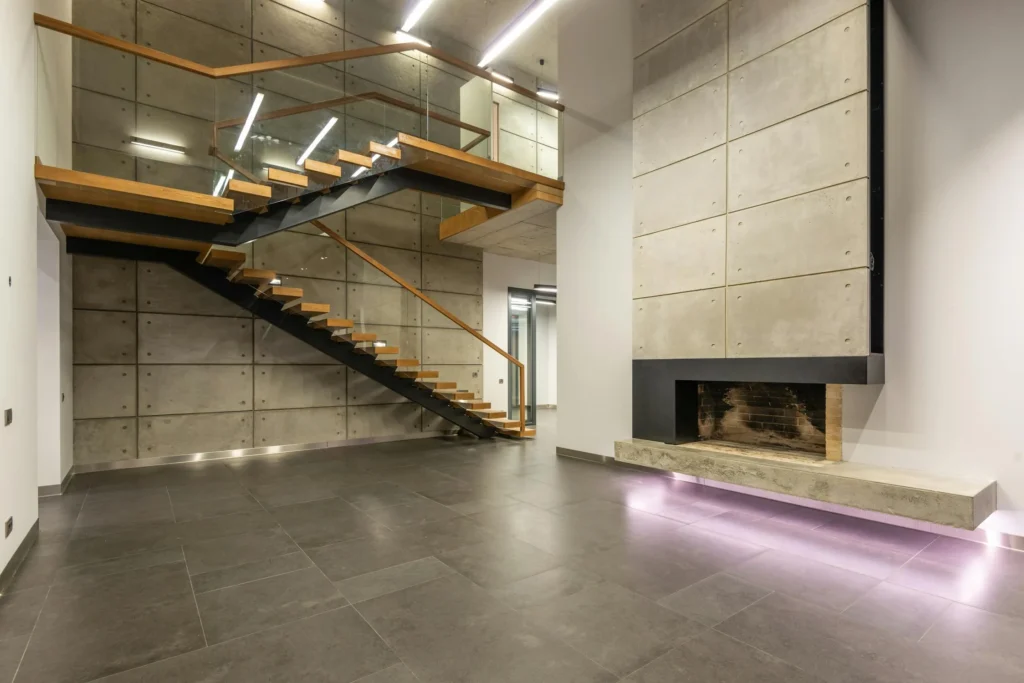In the realm of construction, Australia stands at the forefront of innovation, particularly in the development and utilisation of building materials that prioritise efficiency and sustainability. With a growing emphasis on environmental responsibility and resource efficiency, the construction industry in Australia has been embracing novel materials and technologies to reduce its carbon footprint and enhance the durability and performance of structures. In this blog post, we will explore some of the most promising innovations in Australian building materials, their impact on the industry, and their contribution to a more sustainable future.

Timber: A Renewable Resource
The resurgence of timber as a primary building material in Australian construction represents a significant shift towards more sustainable and environmentally friendly practices within the industry. Historically, timber has been a fundamental building material in Australia, owing to the country’s abundant forest resources. However, with the advent of steel and concrete construction methods in the 20th century, timber saw a decline in its use in favour of materials perceived to offer greater strength and durability.
In recent years, there has been a renewed appreciation for timber’s inherent qualities and its potential to address contemporary challenges such as climate change and urbanisation. Here are some key aspects that highlight the growing prominence of timber in Australian construction:
1. Renewability and Low Carbon Footprint:
Timber is a renewable resource that can be sustainably harvested and replanted, making it inherently more environmentally friendly than non-renewable materials such as steel and concrete. Trees absorb carbon dioxide from the atmosphere as they grow, effectively sequestering carbon within their fibres. This carbon remains stored in the timber even after it is harvested and used in construction, contributing to a net reduction in greenhouse gas emissions compared to materials with higher embodied carbon.
2. Versatility in Construction Applications:
One of timber’s greatest strengths is its versatility in construction applications. From traditional framing and structural elements to innovative architectural features, timber can be utilised in a wide range of building types and styles. Australian architects and engineers are increasingly exploring the creative potential of timber in projects ranging from residential homes and commercial buildings to public infrastructure and urban developments. The aesthetic appeal of timber, combined with its ability to create warm and inviting spaces, has led to its widespread adoption in both traditional and contemporary architectural designs.
3. Engineered Wood Products:
The development of engineered wood products such as cross-laminated timber (CLT) and glue-laminated timber (Glulam) has revolutionised the use of timber in construction. These products offer enhanced structural integrity, dimensional stability, and fire resistance compared to solid timber, allowing for larger and more complex timber structures. CLT, in particular, has gained popularity for its strength-to-weight ratio and prefabrication capabilities, enabling faster construction times and reduced on-site waste. Glulam, on the other hand, provides architects and designers with greater flexibility in shaping and sizing timber elements, opening up new possibilities for innovative timber construction techniques.
4. Environmental Benefits and Sustainability Certifications:
The use of timber in construction aligns with broader sustainability objectives, including reducing carbon emissions, minimising resource depletion, and promoting biodiversity conservation. As awareness of environmental issues grows, there is increasing demand for buildings that prioritise sustainability and energy efficiency. Timber construction offers a compelling solution to meet these demands, with many projects achieving green building certifications such as Green Star and LEED for their use of renewable materials and energy-efficient design strategies.
5. Economic Opportunities and Local Industry Support:
The resurgence of timber in Australian construction has also created economic opportunities for local timber industries and suppliers. By promoting domestic timber production and processing, construction projects contribute to regional economic development and job creation. Additionally, the use of locally sourced timber reduces transportation-related carbon emissions and supports sustainable forestry practices. As the demand for timber continues to grow, there is potential for further investment in research and development to enhance the performance and sustainability of Australian timber products.
Recycled and Sustainable Aggregates
The traditional approach to sourcing aggregates for construction, such as sand and gravel, has long been associated with significant environmental impact, stemming from the extraction process, transportation emissions, and habitat disruption. However, recognizing the urgency of mitigating these adverse effects, Australia has been at the forefront of exploring alternative sources of aggregates to meet the demands of its booming construction industry sustainably.
Among the most promising alternatives are recycled materials derived from construction and demolition waste, representing a valuable resource that would otherwise end up in landfills. By implementing advanced recycling technologies and material recovery processes, these discarded materials can be transformed into high-quality aggregates suitable for use in concrete and other building materials. Additionally, industrial by-products such as slag and fly ash, which are generated from manufacturing processes like steel production and coal combustion, have emerged as viable substitutes for traditional aggregates.
Incorporating these recycled and sustainable aggregates into construction projects not only reduces the industry’s reliance on virgin resources but also helps alleviate the burden on landfill capacity, thereby contributing to waste diversion and circular economy principles.
Moreover, by supporting the development of local recycling infrastructure and supply chains, Australia can foster a more resilient and self-sufficient construction sector while simultaneously reducing its environmental footprint on a national scale. Through collaborative efforts between government agencies, industry stakeholders, and research institutions, Australia is paving the way towards a more sustainable and resource-efficient approach to aggregate sourcing in construction, setting a precedent for other regions to follow suit in addressing the global challenge of sustainable urban development.
High-Performance Insulation
In Australia’s diverse climate conditions, effective insulation is crucial for maintaining indoor comfort and reducing energy consumption. Innovative insulation materials, such as aerogels and vacuum insulation panels (VIPs), offer superior thermal performance compared to traditional insulation products. These high-performance materials enable buildings to achieve higher energy efficiency ratings while requiring less space for installation. Additionally, advancements in reflective insulation technologies have led to the development of radiant barrier systems that mitigate heat gain in hot climates, further enhancing the sustainability of buildings.

Low-Carbon Cement Alternatives
The production of cement, a key component of concrete, represents a substantial contributor to greenhouse gas emissions worldwide, primarily due to the energy-intensive process of clinker production and the calcination of limestone. Recognizing the urgency of addressing this environmental challenge, Australian researchers, and manufacturers have intensified their efforts to innovate and develop alternative cementitious materials that offer comparable performance to conventional Portland cement but with significantly lower carbon footprints. These efforts have led to the exploration and utilisation of a diverse range of supplementary cementitious materials (SCMs) in concrete formulations. SCMs such as fly ash, slag, and calcined clays have gained prominence for their ability to enhance the strength, durability, and workability of concrete while concurrently reducing its carbon intensity.
By replacing a portion of the cement content with these SCMs, construction projects can achieve substantial reductions in greenhouse gas emissions without compromising structural integrity or performance. Moreover, the adoption of emerging technologies such as carbon capture and utilisation (CCU) holds immense promise for further mitigating the environmental impact of cement production processes. CCU technologies enable the capture and utilisation of CO2 emissions from cement plants, thereby preventing the release of greenhouse gases into the atmosphere while simultaneously creating value-added products. Through the integration of CCU technologies into cement manufacturing processes, Australia can significantly reduce its carbon footprint and contribute to global efforts to combat climate change. Additionally, by fostering collaboration between academia, industry, and government stakeholders, Australia can accelerate the deployment and commercialization of these innovative technologies, positioning itself as a leader in sustainable cement production and paving the way towards a more environmentally responsible construction industry.
Photovoltaic Building Materials
With the growing emphasis on renewable energy generation, integrating photovoltaic (PV) technology into building materials presents a promising avenue for sustainable construction. Australian researchers have been developing PV-integrated building materials such as solar roof tiles, façade cladding systems, and transparent solar windows. These innovative products not only generate clean electricity but also serve as functional building elements, reducing the need for separate solar panel installations and enhancing the aesthetics of buildings. By harnessing solar energy at the point of use, PV building materials contribute to the decarbonization of the built environment and the transition towards net-zero energy buildings.
Paving the Way Towards Sustainable Construction
Innovation in building materials is driving a paradigm shift in the Australian construction industry, with a growing emphasis on efficiency, durability, and sustainability. By embracing renewable resources, recycled materials, and advanced technologies, construction professionals are redefining the way buildings are designed, constructed, and operated. As Australia continues to confront the challenges of climate change and urbanisation, the adoption of innovative building materials will play a crucial role in creating resilient and sustainable built environments for future generations.
Through collaboration between industry stakeholders, research institutions, and government agencies, Australia has the opportunity to lead the global transition towards more sustainable construction practices. By investing in research and development, incentivizing green building certifications, and fostering a culture of innovation, the Australian construction sector can unlock the full potential of innovative building materials to create a built environment that is both environmentally responsible and economically viable. As we look towards the future, the journey towards sustainability in construction begins with the materials we choose today.
Embrace the future with Wunderbuild, where cutting-edge technology meets robust construction management. Discover how we can revolutionise your projects in the rapidly evolving Australian construction landscape. Explore Wunderbuild here for a smarter building experience.




